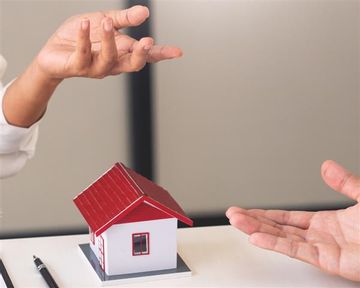Slow-living homes - a much needed therapeutic trend
Our lives have been inexorably gathering speed during the past two decades and, after two challenging years of a global pandemic that saw our stress levels spike even further, the need for a slower, more meaningful pace of living comes as no surprise.
“As devastating and disruptive as the pandemic was, it also gave us pause for thought and forced us to reconsider what is actually important in our lives and, for many people, this introspection has prompted them to seek a better quality of lifestyle”, says Yael Geffen, CEO of Lew Geffen Sotheby’s International Realty.
“During the pandemic, our homes became so much more than just places of shelter; they became our sanctuaries for wellbeing and health and we spent more time in them than ever before, learning to bake banana bread, honing gardening skills, and spending quality family time.
“So, it makes sense that we now want to adapt our homes to suit our new priorities and lifestyle shifts, and, in order to do so, many people are embracing the slow-living trend.”
However, Geffen believes that this movement is more than a mere trend: “It’s more like a set of values that prioritises flexibility and wellbeing and appreciating that faster isn’t always better. It celebrates the ordinary and encourages us to fill our homes with organic goodness and to find joy in simple pleasures.
“A slow living home is about creating a space that works for you in terms of practicality and enjoyment rather than one that’s Instagram-worthy. The aim should be to craft a uniquely personal space into which you can retreat, prioritising relaxation and enjoyment.”
Geffen offers the following tips for creating the ultimate slow-living home:
Design your home to work for you
Consider your daily routine, lifestyle, and what brings you joy, prioritising functionality and comfort. Identify your needs and think about how you want your home to feel – do you prefer an understated look or do you like the classic feel, do you need a peaceful area for hobbies, is there a room towards which you usually gravitate?
A calm environment is key
The goal is to create a retreat from daily life so a tranquil environment is a key element and will always encourage your body and mind to relax as soon as your step through the door.
Less is more
It’s impossible for most people to relax amidst clutter as it raises our stress levels, making it that much harder to relax. And the more stuff you have, the greater the likelihood of clutter.
An organised environment is a calm environment and it will also highlight the aspects of your home you love the most so discard anything that doesn't serve a purpose in your life in a sustainable way. As Marie Kondo advises: Ask yourself if the object sparks joy in your heart – if not, you probably don’t need to hang onto it.
Optimise the natural lighting in your home
Natural light not only makes a room lighter and brighter and appear more spacious, it’s also known to boost our wellbeing and uplift our mood and it helps us to feel more awake and energised.
Buy less, buy better
Slow living is about consuming less and taking a slower approach to everyday life so be mindful of what you buy and bring into your home.
Sentimental or meaningful items that have a purpose of spark joy will add much more value to your home experience than any on-trend piece of décor. Buy quality items and be considerate of the brands you want to support.
Nature-inspired elements
Think natural fabrics, light tones, nature's colours and plants. Look into biophilic design and source items made from sustainable materials. Grow fresh herbs in your kitchen and turn your garden into an oasis of colour.
Use considered materials
Embrace the natural imperfections and inconsistencies found in organic materials like wood and marble when sourced from sustainable origins. Yours will also be unique as nature is wonderful in that respect.
Choose meaningful artwork
Artwork selection is a highly personal and individual decision that makes a clear statement about the person who lives in the home and you should therefore put some thought into it. It needn’t be expensive collectibles – just pieces that you love and which bring you joy.
Adopt the principles of hygge
The Danish have already coined a term for this concept: hygge, which in essence means creating a warm and cosy atmosphere and enjoying the simple but good things in life with good people. Cuddling up to watch a movie with your partner, enjoying a delicious meal at home with close friends – that’s hygge too.
“There is much upheaval in the world at the moment and unfortunately very little of it will be resolved overnight, but everything is so much easier to deal with when we have a sanctuary to which we can return each day; a place that helps us to relax, unwind and recharge,” concludes Geffen.

